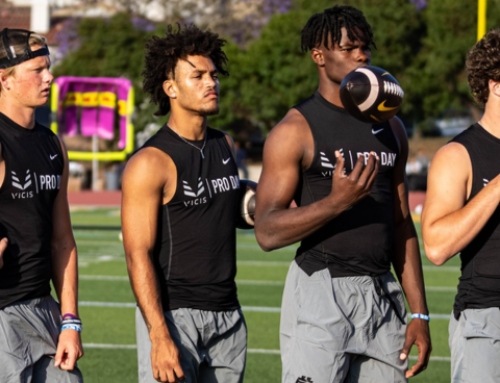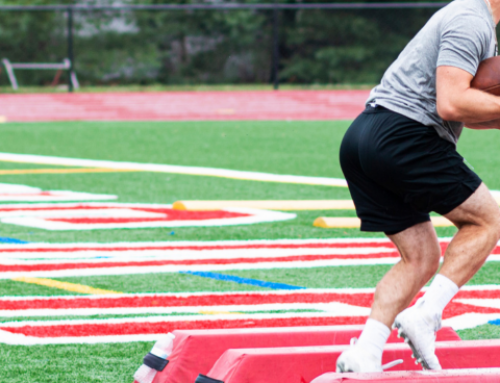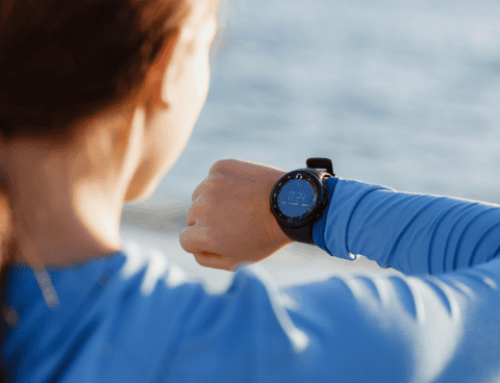![]()
Imagine a reality in which you could be transported into the body of an NFL or college football player on a Saturday or Sunday during the season. You’d see what he sees, move where he moves and, perhaps best of all, not feel a damn thing when he is crushed by another giant human being.
Now, imagine a reality in which a quarterback could play back his memories from a recent game, “The Entire History of You” style, from the exact same viewpoint he had when he was under center. He could see the exact defensive set he was throwing against and relive his decisions, then pause the memory on an incorrect read and create a sort of alternate timeline in which he made the correct play instead.
As early as the 2016 college bowl games, both of these virtual realities could become, well, realities. Over 30 college and NFL teams have begun implementing helmet cameras during practice as a way to receive and study new angles of each play from the athlete’s point of view.
RELATED: 5 Awesome Videos That Combine Google Glass and Sports
Some schools are sticking with GoPro cameras atop players’ helmets. Others, like Oregon, Texas Tech, Notre Dame and Michigan, have been working with a company called Schuttvision, which offers a camera small enough to fit into a player’s helmet just above the face mask. It could soon become the first in-game camera the NCAA allows on the field of play.
Ever wondered what it’s like to catch passes from @T_Hill4 or @tannermangum? #BYUFOOTBALL #FALLCAMP #GOPRO pic.twitter.com/GNNAXeQNIR
— BYU Football Video (@BYUFBvideo) August 11, 2016
Regardless of which lens is used, the resulting visuals are pretty fantastic. Take a recent BYU football practice, for instance, in which GoPros were attached to the helmets of a couple of Cougar receivers as they ran routes and snagged passes from several quarterbacks. Now imagine that same footage being used for a replay in an actual game. It would enhance the fan experience tenfold. Think of being able to see Todd Gurley juke a defender out of his shoes from Gurley’s point of view—or the defender’s. It’s giving me chills.
But the helmet cam has another use, allowing teams to break down film in ways they’ve never been able to before. The Pittsburgh Steelers were the first team to incorporate Schuttvision cameras (during practice in 2014). Offensive coordinator Todd Haley told the Pittsburgh Tribune-Review about its benefits, especially for the quarterback:
“You can identify the fronts, and when we are pointing out [middle linebackers] and stuff like that, because usually the eyes are looking where [QB Ben Roethslisberger] is pointing. You can see the direction the head is at the snap. It’s interesting technology. It’s a neat concept. We haven’t done a whole bunch with it, but the technology is phenomenal.”
RELATED: The NBA is Experimenting With Wearable Technology
Steelers quarterbacks coach Randy Fichtner thought the footage from Roethlisberger’s camera would allow his backup quarterbacks to see the field exactly the same way that Big Ben sees it, allowing them to get inside his head.
“You would like to think that if you see something from his eye level that it could potentially give every other quarterback who wasn’t getting that rep a chance to view that,” Fichtner said.
Earlier this week, we stuck a camera on TheeCount2’s helmet for a Bird’s Eye View of #EaglesCamp … pic.twitter.com/cqjXt5f2SY
— SEAT77 NFL (@NFLon77) July 29, 2016
The Philadelphia Eagles have been using helmet cams in their 2016 training camp, giving them to defensive backs and wide receivers as well as to their QBs. Eagles defensive back Blake Countess said they’ve helped him recognize the progressions he makes with his eyes, and showing him when he’s made a wrong move.
“Eye progressions,” Countess told CBS Philly. “Just seeing where I’m looking at and being more disciplined with my eyes. Throughout the play if your eyes are bad, you’re probably going to get beat, especially as a defensive back.”
Much like virtual reality, helmet cams are a natural progression of football technology, and they’ll enhance the football experience, not only for the fans, but for the players themselves. Though the tech is still new and coaches are still figuring out exactly how best to use it, things like correct head, eye and body movement are crucial to a player’s ability to perform at his highest level. A camera that allows a player to rewind and see his specific movements adds another layer to the concept of game film. It’s an exciting future, one that could be here as early as November.

Photo: www.schuttvision.com
RECOMMENDED FOR YOU
MOST POPULAR
![]()
Imagine a reality in which you could be transported into the body of an NFL or college football player on a Saturday or Sunday during the season. You’d see what he sees, move where he moves and, perhaps best of all, not feel a damn thing when he is crushed by another giant human being.
Now, imagine a reality in which a quarterback could play back his memories from a recent game, “The Entire History of You” style, from the exact same viewpoint he had when he was under center. He could see the exact defensive set he was throwing against and relive his decisions, then pause the memory on an incorrect read and create a sort of alternate timeline in which he made the correct play instead.
As early as the 2016 college bowl games, both of these virtual realities could become, well, realities. Over 30 college and NFL teams have begun implementing helmet cameras during practice as a way to receive and study new angles of each play from the athlete’s point of view.
RELATED: 5 Awesome Videos That Combine Google Glass and Sports
Some schools are sticking with GoPro cameras atop players’ helmets. Others, like Oregon, Texas Tech, Notre Dame and Michigan, have been working with a company called Schuttvision, which offers a camera small enough to fit into a player’s helmet just above the face mask. It could soon become the first in-game camera the NCAA allows on the field of play.
Ever wondered what it’s like to catch passes from @T_Hill4 or @tannermangum? #BYUFOOTBALL #FALLCAMP #GOPRO pic.twitter.com/GNNAXeQNIR
— BYU Football Video (@BYUFBvideo) August 11, 2016
Regardless of which lens is used, the resulting visuals are pretty fantastic. Take a recent BYU football practice, for instance, in which GoPros were attached to the helmets of a couple of Cougar receivers as they ran routes and snagged passes from several quarterbacks. Now imagine that same footage being used for a replay in an actual game. It would enhance the fan experience tenfold. Think of being able to see Todd Gurley juke a defender out of his shoes from Gurley’s point of view—or the defender’s. It’s giving me chills.
But the helmet cam has another use, allowing teams to break down film in ways they’ve never been able to before. The Pittsburgh Steelers were the first team to incorporate Schuttvision cameras (during practice in 2014). Offensive coordinator Todd Haley told the Pittsburgh Tribune-Review about its benefits, especially for the quarterback:
“You can identify the fronts, and when we are pointing out [middle linebackers] and stuff like that, because usually the eyes are looking where [QB Ben Roethslisberger] is pointing. You can see the direction the head is at the snap. It’s interesting technology. It’s a neat concept. We haven’t done a whole bunch with it, but the technology is phenomenal.”
RELATED: The NBA is Experimenting With Wearable Technology
Steelers quarterbacks coach Randy Fichtner thought the footage from Roethlisberger’s camera would allow his backup quarterbacks to see the field exactly the same way that Big Ben sees it, allowing them to get inside his head.
“You would like to think that if you see something from his eye level that it could potentially give every other quarterback who wasn’t getting that rep a chance to view that,” Fichtner said.
Earlier this week, we stuck a camera on TheeCount2’s helmet for a Bird’s Eye View of #EaglesCamp … pic.twitter.com/cqjXt5f2SY
— SEAT77 NFL (@NFLon77) July 29, 2016
The Philadelphia Eagles have been using helmet cams in their 2016 training camp, giving them to defensive backs and wide receivers as well as to their QBs. Eagles defensive back Blake Countess said they’ve helped him recognize the progressions he makes with his eyes, and showing him when he’s made a wrong move.
“Eye progressions,” Countess told CBS Philly. “Just seeing where I’m looking at and being more disciplined with my eyes. Throughout the play if your eyes are bad, you’re probably going to get beat, especially as a defensive back.”
Much like virtual reality, helmet cams are a natural progression of football technology, and they’ll enhance the football experience, not only for the fans, but for the players themselves. Though the tech is still new and coaches are still figuring out exactly how best to use it, things like correct head, eye and body movement are crucial to a player’s ability to perform at his highest level. A camera that allows a player to rewind and see his specific movements adds another layer to the concept of game film. It’s an exciting future, one that could be here as early as November.

Photo: www.schuttvision.com










